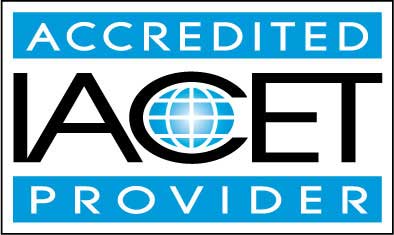Online Class: Understanding the Americans with Disability Act

no certificate
with CEU Certificate*
-
15Lessons
-
24Exams &
Assignments -
157Students
have taken this course -
5Hours
average time -
0.5CEUs
Course Description
Championing Equal Rights in Every Walk of Life
Imagine a world where everyone, regardless of their abilities or disabilities, stands on an equal footing. The Americans with Disabilities Act (ADA) isn't just a law; it's a testament to the spirit of inclusivity that shapes such a world. Spanning all facets of public life, from bustling workplaces to serene parks, the ADA ensures that every individual with disabilities enjoys rights and opportunities mirroring those without.
Embark on a transformative journey with our course, where you will:
- Dive deep into the ethos of the ADA and its unwavering commitment to equality.
- Grasp the nuanced definition of 'disability' under the act.
- Navigate the multifaceted objectives of the ADA, which stretch beyond mere legality.
- Unpack the stipulations and mandates that the ADA anchors.
- Understand the implications of the ADA for employers, ensuring workplaces shine as beacons of inclusivity.
- Decode the ADA's expectations from private enterprises, like bustling retail hubs.
- Dissect the ADA's outreach into governmental bodies and telecom sectors.
- Learn actionable insights to render physical and digital spaces welcoming for everyone.
- Explore the synergy between the ADA and its sister laws, all aimed at bolstering disability rights.
This course not only unravels the intricate tapestry of the Americans with Disabilities Act of 1990 and the ADA Amendments Act of 2008 (ADAAA) but also serves as a primer for businesses, public bodies, and individuals. Whether you're an employer aiming for a gold standard in inclusivity or simply an individual yearning for knowledge, this course will be your compass.
Step in, and let's collaboratively usher in an era where accessibility isn't a privilege but a norm. Are you ready to be the change?
- Completely Online
- Self-Paced
- 6 Months to Complete
- 24/7 Availability
- Start Anytime
- PC & Mac Compatible
- Android & iOS Friendly
- Accredited CEUs

Course Lessons
Lesson 1. The Americans with Disability Act: Ensuring Equal Opportunities for All
The Americans with Disabilities Act (ADA) ensures equal rights for individuals with disabilities, covering areas like employment and public services. Since its enactment in 1990 and amendment in 2008, it addresses discrimination and advocates for accessibility.Lesson 2. Understanding ADA's Disability Criteria
The ADA defines disability through a three-part lens that helps discern whether an individual is protected under its statutes, focusing specifically on physical or mental impairments, records of such impairments, or individuals being regarded as having impairments. It ensures protection against discrimination for qualified individuals with disabilities and extends its coverage to those associated with them, illustrating scenarios where protection is applicable or not.Lesson 3. ADA Non-Discrimination Essentials
Both public and private entities under the ADA must adapt services whenever obligatory, barring fundamental alterations. Entities shouldn't charge for such modifications but may request refundable deposits for aids and devices.Lesson 4. Understanding Title I ADA Compliance
The ADA's Title I enforces non-discrimination for disabled employees, covering essential employment-related activities while defining exemptions for smaller employers or specific entities. Employers must evaluate essential job functions and accommodate employees unless doing so causes undue hardship.Lesson 5. ADA Title I: Obligations During Hiring and Employment
An employer should consult with the employee to determine reasonable accommodations for a disability, tailoring adjustments to enable effective performance of essential job functions. However, accommodations must not impose undue hardship on the operation of the business.Lesson 6. Interviewing and Your Workplace Rights
Under the ADA, employers must engage in nondiscriminatory hiring practices and provide reasonable accommodations during the application processes unless it causes undue hardship. This includes offering accessible formats for pre-hiring tests and maintaining confidentiality of medical information shared during the hiring process.Lesson 7. Applying ADA Title I Standards to Employee Conduct
Lesson Summary 1: Title I of the ADA mandates that employers must not discriminate against qualified employees with disabilities and should provide reasonable accommodations without lowering performance standards. Employers are neither required to factor in a disability when evaluating job performance nor in disciplinary actions if standards are unmet, provided the actions are not because of the disability.Lesson 8. Navigating Employer Leave and ADA Requirements
For leave as a reasonable accommodation, employers must evaluate factors like leave length, frequency, and predictability to determine possible undue hardships. Employees should return to their original position unless doing so imposes an undue hardship, in which case alternative arrangements should be explored.Lesson 9. ADA Title II: Guidelines for State and Local Governments
Individuals facing discrimination under Title II can file lawsuits, seek damages, or report to federal agencies like the Department of Justice within a 180-day window, with provisions available for extending this period under special circumstances. Enforcement can include stopping discriminatory practices and potential financial remedies.Lesson 10. ADA and The Public Sector: Compliance and Challenges
Under Title II of the ADA, public sector organizations are required to ensure their programs and facilities are accessible to individuals with disabilities, thus preventing discrimination. This entails providing essential services, reasonable accommodations, and undertaking regular self-evaluation surveys.Lesson 11. Equal Access and Public Accommodations: Unveiling the Core of Title III
Title III of the ADA mandates that private entities, including businesses and non-profits, ensure individuals with disabilities have equal access to goods and services in public accommodations. However, religious organizations and private clubs typically enjoy exemptions unless they engage in public activities outside their exempt purposes.Lesson 12. Understanding Healthcare Facility Obligations Under Title III
The ADA's Title III enforces the provision of nondiscriminatory service and complete accessibility to private healthcare facilities, insisting on effective communication aids and necessary architectural modifications. Healthcare providers must judiciously allocate resources to mitigate undue hardships while promoting equitable healthcare experiences for patients with disabilities.Lesson 13. Access for All: Websites and ADA Title III
Private entities under Title III of the ADA must ensure both their physical and digital spaces are accessible, even if websites aren't explicitly included yet. Legal actions have already targeted sites like Netflix, indicating a growing expectation for digital ADA compliance.Lesson 14. Accessible Design: Adapting Buildings for All
Ensuring accessible entrances and paths seems trivial, but they present pivotal changes that redefine accessibility, empowering individuals with disabilities to navigate spaces autonomously. By incorporating ramps, adjusting door dimensions, and clearing travel routes, public accommodations align with ADA standards effortlessly.Lesson 15. ADA and Companion Laws: Legal Synergies in Detail
The ADA, alongside other disability-focused laws like IDEA and the FMLA, forms a robust framework ensuring equitable treatment in education and workplaces by preventing discrimination based on disabilities. These laws play distinct yet often overlapping roles, harmonizing various protections while ensuring that individuals with disabilities are integrated into society without unwarranted hardship or isolation.
Learning Outcomes
- Define the core principles of the Americans with Disabilities Act and its significance as a civil rights law by summarizing its objectives.
- Identify the five titles of the ADA and explain their specific focus areas, including the responsibilities of entities under each title.
- Demonstrate an understanding of the three-part definition of disability under the ADA, including physical or mental impairment, record of impairment, and perception of impairment.
- Identify major life activities and mitigating measures that impact the determination of whether an individual's impairment qualifies as a disability under the ADA.
- Describe the integration requirements of the ADA and provide examples of how individuals with disabilities should be included in general programs and services.
- Identify eligibility criteria for programs under the ADA and evaluate scenarios to determine if discrimination occurred based on these criteria.
- Define the term 'essential job functions' and describe how they impact non-discrimination protections under Title I of the ADA.
- Identify the criteria for employers required to comply with Title I of the ADA and distinguish between covered and exempt employers.
- Describe the legal constraints imposed by Title I of the ADA on pre-employment screenings and hiring practices, including prohibited questions and required accommodations.
- Identify examples of reasonable accommodations that employers might implement under Title I of the ADA to support employees with disabilities, ensuring these accommodations are both effective and cost-efficient.
- Identify prohibited questions about disabilities during job interviews per ADA guidelines and describe the consequences of violating these rules.
- Recognize the legality of interview accommodations under the ADA and identify reasonable accommodations employers must provide.
- Define the essential job functions that a disabled employee must perform to comply with Title I of the ADA.
- Demonstrate mastery of lesson content at levels of 70% or higher.
Additional Course Information

- Document Your Lifelong Learning Achievements
- Earn an Official Certificate Documenting Course Hours and CEUs
- Verify Your Certificate with a Unique Serial Number Online
- View and Share Your Certificate Online or Download/Print as PDF
- Display Your Certificate on Your Resume and Promote Your Achievements Using Social Media

Choose Your Subscription Plan
No Certificate / No CEUs
This course only
| Includes certificate | X |
| Includes CEUs | X |
| Self-paced |

|
| Instructor support |

|
| Time to complete | 6 months |
| No. of courses | 1 course |
Certificate & CEUs
This course only
| Includes certificate |

|
| Includes CEUs |

|
| Self-paced |

|
| Instructor support |

|
| Time to complete | 6 months |
| No. of courses | 1 course |
Certificates & CEUs
Includes all 600+ courses
| Includes certificate |

|
| Includes CEUs |

|
| Self-paced |

|
| Instructor support |

|
| Time to complete | 12 Months |
| No. of courses | 600+ |
Certificates & CEUs
Includes all 600+ courses
| Includes certificate |

|
| Includes CEUs |

|
| Self-paced |

|
| Instructor support |

|
| Time to complete | 24 Months |
| No. of courses | 600+ |
Related Courses
-
 54 hours
5.4 CEUs
Become a Life Coach - Course Bundle
+ More Info
54 hours
5.4 CEUs
Become a Life Coach - Course Bundle
+ More Info
-
 5 hours
0.5 CEUs
Critical Thinking Skills
+ More Info
5 hours
0.5 CEUs
Critical Thinking Skills
+ More Info
-
 10 hours
1.0 CEUs
Disaster Risk Reduction: Preparing for Emergencies
+ More Info
10 hours
1.0 CEUs
Disaster Risk Reduction: Preparing for Emergencies
+ More Info
-
 2 hours
0.2 CEUs
Purchasing and Vendor Management 101
+ More Info
2 hours
0.2 CEUs
Purchasing and Vendor Management 101
+ More Info
-
 22 hours
2.2 CEUs
Anatomy and Physiology 101
+ More Info
22 hours
2.2 CEUs
Anatomy and Physiology 101
+ More Info
-
 7 hours
0.7 CEUs
Creating a Level Playing Field in the Workplace
+ More Info
7 hours
0.7 CEUs
Creating a Level Playing Field in the Workplace
+ More Info
-
 6 hours
0.6 CEUs
HIPAA Compliance 101
+ More Info
6 hours
0.6 CEUs
HIPAA Compliance 101
+ More Info
-
 3 hours
0.3 CEUs
Cat Care and Training 101
+ More Info
3 hours
0.3 CEUs
Cat Care and Training 101
+ More Info





